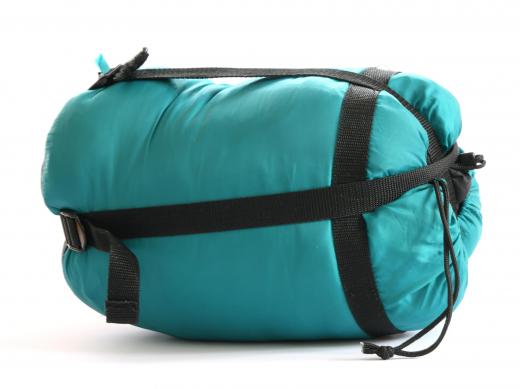Kayak camping is an outdoor sport which involves paddling kayaks to a camping site and spending the night. A kayak camping trip can last overnight, or much longer, depending on personal taste, and campsites can be reached through rivers, lakes, or the open ocean. Properly preparing for a kayak camping trip is crucial, and will make the experience more enjoyable. As you become more experienced with kayak camping, you will learn about the gear that works best for you, the climate, and the environment.
The gear for kayak camping starts, of course, with a kayak and paddles. Always bring extra paddles along, in case of accidents. Depending on what kind of vehicle you have, you can strap the kayak or kayaks on top, or tow a trailer with your kayaks strapped on. Make sure that safe parking is available, or that someone is available to drop you off and pick you up. You should also pack your kayaks before heading out, to ensure that all of your gear will fit, and the weight will be evenly balanced.

The basic principle of packing for kayak camping is that you should assume that everything you pack may get wet. You can minimize the risk of this by packing supplies in dry bags, heavily insulated plastic or rubber bags which can be sealed. However, if a dry bag fails, you want the contents to be usable, so try to pack water resistant items, and textiles which can be quickly and easily dried. Avoid wool and other materials which will get heavy if they are wet.

At a minimum, you will need food, water, water purification, and shelter. You want to pack as lightly as possible, since you cannot carry too much gear, both volume and weightwise, in your kayaks. For shelter in warmer climates, a sleeping bag is sufficient. However, packing a tent or tarp is an excellent idea, especially in cooler areas or in a region where rain is likely. In addition to food which can be eaten straight, you may want to expand your options by packing a cook stove, and you should also pack pots, pans, and utensils to cook and eat with. Try to focus on high energy foods which are easy to prepare.

Water is extremely important. In addition to bringing fresh clean water, a water filtration pump should be packed if you will have access to fresh water. Otherwise, you need to pack approximately ¾ gallon (three liters) of water for each camper per day. You should also plan on bringing layers of protective clothing, including rain gear. Some people like to wear a wetsuit for kayak camping, with a hat and a long sleeved shirt on over it for additional protection.

Personal care items will help to make kayak camping more enjoyable. Hairbrushes, toothbrushes, bug spray, aspirin, biodegradable soaps, and other products will help keep campers clean and comfortable. In addition, a supply of toilet paper and garbage bags should be packed. You should plan on packing everything out with you when you leave, and you may want to check on laws governing the disposal of biological wastes. In some regions, you may be asked to use so called “honey tubes” to collect your waste and drop it off at a bathroom on your return.
